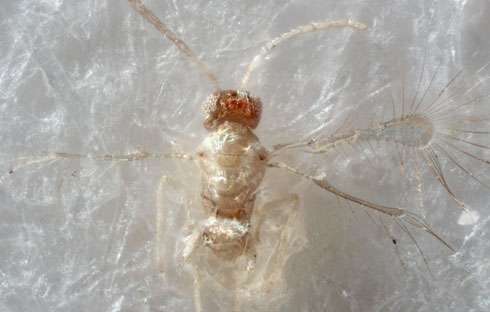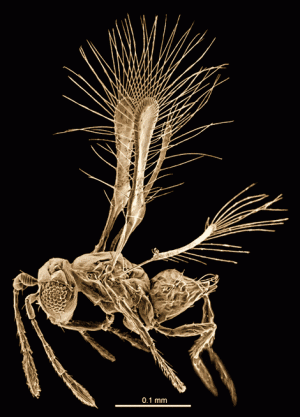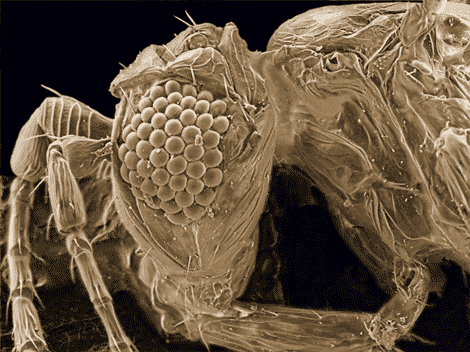Tinkerbella nana, a new species of fairyfly

It's just about visible to the naked eye and has a name that makes you wonder if it's make-believe. Tinkerbella nana sounds like something from a fairytale, but it is a new genus and species of fairyfly, the group of tiny parasitic wasps given their name because of their delicate structure.
Tinkerbella nana is 250 micrometres long - that's 2.5 times the width of a human hair. The minute insect was identified by a team led by John Huber at the Canadian National Collection of Insects and John Noyes at the Natural History Museum.
Noyes collected the insect during a scientific expedition in the tropical forests of Costa Rica. He used methods adapted for catching extra tiny creatures, which included gently dragging a sweep net fitted with a 4mm screen through the vegetation and then carefully searching the collected debris and extracting specimens by hand. 'What surprised me the most was that I found so many of them,' says Museum insect expert John Noyes.
'Can you imagine finding something less than 0.2mm in a "250ml soup" of material that includes lots of plant debris and other insects up to 8mm long. It is possibly equivalent to finding a solitary needle in 200 haystacks.'

Naming the fairyfly
Noyes explains why they gave the insect its name. 'Tinkerbella seemed a very appropriate generic name for this particular insect. It is surprising that it has not been used before. The species name is a play on nanos (Greek for dwarf) and Nana – the name of the dog in Peter Pan'.
Small relations
Tinkerbella is one of the smallest known arthropods. It belongs to the family Mymaridae that includes Kikiki huna, the smallest winged insect at 158 micrometres long, specimens of which were also found in the same collection.
Biodiversity questions
'This discovery really shows how diverse insect life is on this planet and how much there is to discover, especially in the tropics,' Noyes says.
It also raises many questions about how something so small can exist in a habitat such as a tropical forest.

As a parasitic wasp, Tinkerbella probably develops in the eggs of other small insects. But Noyes wonders how the tiny insect finds these. 'It is likely that the density of its host is very low. Surely something this small has difficulty moving very far. And, how does it control the direction in which it moves?'
However these tiny creatures manage to survive, they are certainly successful. Many more similarly-sized species have been found in the same habitat during previous collections. There are, Noyes suspects, 'perhaps in this particular area of forest, more than 300 species of parasitic wasps that are less than 0.5mm long.
Tinkerbella specimens have been added to the Museum collection of about 1.5 million wasps, which are used by researchers worldwide. The scientific description of the new species Tinkerbella nana is published in the Journal of Hymenoptera Research.
More information: www.pensoft.net/journals/jhr/a … er-genus-kikiki-and-
Journal information: Journal of Hymenoptera Research
Provided by Natural History Museum


















